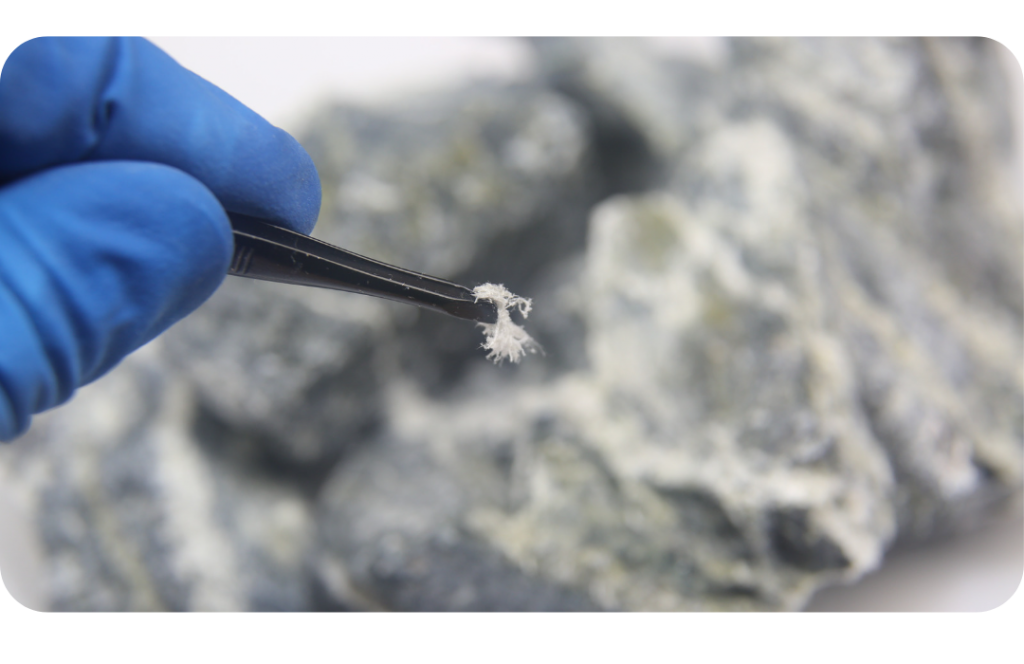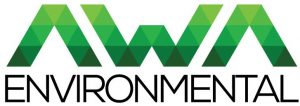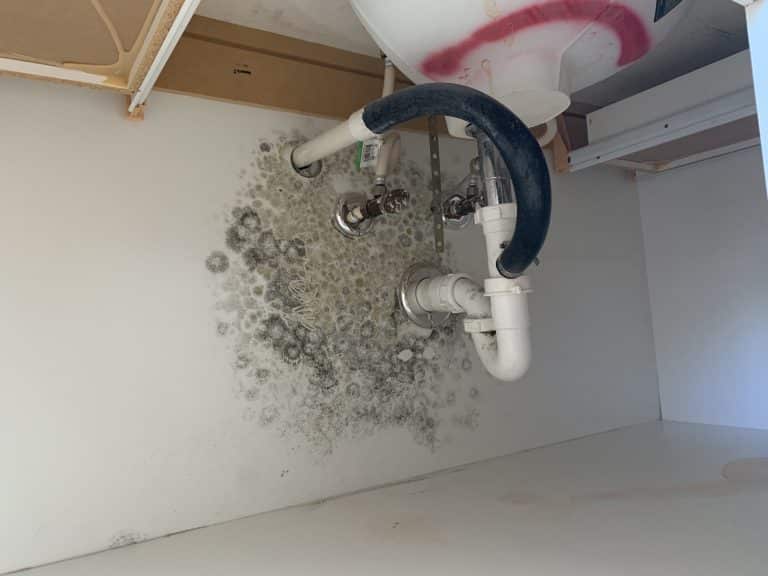Frequently Asked Questions

Mold
Mold is a fungus, and it’s found almost everywhere—everywhere with water, warmth, oxygen and a food supply, that is. Outdoor mold has an important role in the ecological scheme of things: It breaks down organic matter (e.g., dead leaves, plants, trees) and returns those nutrients to the soil. Without mold, without those nutrients, the entire food chain would go berserk.
Indoor mold is a whole other matter. We could live without it quite well. It’s unsightly, smelly and, literally, sickening. Mold comes indoors via spores (microscopic seeds) that float around in the air until they find just the right place to establish a new colony—your basement or attic, shower, drywall, for instance, that is warm and damp. Once there, the mold itself doesn’t move; it spreads by means of its very fine filaments (hyphae) that can grow to great lengths.
Once the mold has settled in, its spores are floating around inside your home, causing any number of illnesses at varying degrees of severity, particularly upper respiratory conditions. As for your home, mold can bring it down around you, if left unchecked to feast on organic materials, such as wood (even the studs in your walls), paper, textiles, drywall, carpet and floorboards.
Several factors create the “perfect storm” for mold infiltrating your home:
Mold Spores
Moisture
Warmth
Oxygen
Darkness
Mold Food
Time (24-48 hours)
Spores are microscopic seeds that mold releases into the air to “go forth and multiply.” They float around unseen and have no trouble at all getting into your home. They go right through an open window or the HVAC air takes. You can even carry them in on your clothes. Or they use your pet for transportation. It doesn’t matter how they get in—there really is no stopping them. Once in, they then search for moisture, first and foremost, and the odds are high that they will find it: Maybe with the high humidity or leaky faucets, pipes, roof. You might have water-damaged building materials. There are wet towels or clothing lying around. Shower walls weren’t dried, spills not wiped up. Once the need for moisture is satisfied, our homes provide the warmth, air, dark places and that yummy food supply: drywall, wallpaper, wood, materials, and the like. All spores need is a day or two to develop and, just like that, you have mold!
The three most common methods of testing for mold are air testing, surface testing and bulk testing. Each test measures something different, so it’s best to do all three tests. And do them in different areas of your home at different times of the day.
Air Testing: Tests the concentration of spores in the air in your home. Lets you know if you have mold even if you haven’t seen or smelled it. The drawback with air testing is that the spore count can change dramatically in a short time, and results will vary throughout the day.
Surface Testing: Samples are taken from household surfaces by swabbing or tape-lifting them. In a laboratory, the samples are analyzed to determine how much mold is deposited throughout the house. The drawback is that mold and its spores are not spread evenly on the surfaces around your home, and results vary according to time and place. Also, surface testing cannot determine the exact concentration of spores in the air.
Bulk Testing: Pieces of material (e.g., carpet, wallpaper, wood) are collected from various areas of the home and taken to a laboratory. The material is examined under a microscope to determine (1) if you have a mold problem; (2) if mold is present, what species it is; and (3) what the concentration of mold particles is. The drawbacks are that the test cannot determine if spores are being released into the air and the possibility of spreading the mold while collecting the samples.
Mold produces gasses called microbial volatile organic compounds (MVOCs). Some are odorless, but some smell like what we usually associate with mold. We call it “musty,” but that’s not real descriptive. In fact, it’s a very difficult odor to describe. So here are the attempts people have made, and you may get at least an inkling of what it smells like.
· The earthy, damp, loamy smell of the forest (but without the continual flow of fresh air in the forest)
· The smell of dirt covered by decaying leaves
· Wet, dirty socks and/or a grungy locker room
· Stale, like old books or any papers improperly stored for a long time
· Old cheese
· Wet dog
One thing is for sure: We cannot infer from those descriptions that the smell is pleasant or even neutral. But that’s not a bad thing. Often, the smell is the only, or the first, sign that our homes have been invaded by mold.
If you really must know first-hand what mold smells like, the next time you do laundry, leave the washed clothes in the washer for a day or so. That’s the smell of mold. You will need to rewash the clothes.
It is. The danger runs the gamut from minimal to deadly. The danger is exacerbated when the mold is hidden—as it so often is: in the walls, under the floorboards or carpets, in the dark nooks and crannies of the basement or attic. It is also a more dire problem for infants and toddlers; the elderly; people with certain pre-existing health problems, such as asthma, COPD and emphysema; and anyone with a weakened immune system, e.g., HIV, AIDS and chemotherapy patients. But, make no mistake, the more toxic molds are dangerous regardless of age or health status. The danger also depends on the mold species, the amount present and the length of exposure.
At the lower end of the danger spectrum are health problems that are similar to any allergic reactions: sneezing, stuffy nose, watery eyes. At the upper end, there is severe pneumonia with potentially fatal complications and pulmonary hemorrhage (substantial bleeding in the lungs). In between there are varying degrees of upper respiratory infections, such as asthma attacks, chronic sinus problems and bronchitis.
Don’t forget about those non-human family members: your pets. Mold is dangerous for them also, and the smaller the pet, the greater the danger. If Rover or Tabby is chewing on his paws, sneezing frequently or scratching at his ears, time for a visit to the vet.
It is. The danger runs the gamut from minimal to deadly. The danger is exacerbated when the mold is hidden—as it so often is: in the walls, under the floorboards or carpets, in the dark nooks and crannies of the basement or attic. It is also a more dire problem for infants and toddlers; the elderly; people with certain pre-existing health problems, such as asthma, COPD and emphysema; and anyone with a weakened immune system, e.g., HIV, AIDS and chemotherapy patients. But, make no mistake, the more toxic molds are dangerous regardless of age or health status. The danger also depends on the mold species, the amount present and the length of exposure.
Well, it’s complicated. But then insurance coverage often is. So here are generalities and then you can check your own policy and with your state’s insurance regulations.
Insurers cover mold contamination that results from sudden and unforeseen accidents, such as a burst pipe, a toilet that overflowed or a malfunctioning A/C unit—as long as you take reasonable steps to mitigate the damage.
Examples of what will be covered
· The hot water heater bursts and mold grows on the surrounding walls.
· Mold develops due to the fire company extinguishing a fire at your home.
· The dishwater goes haywire and floods your kitchen.
Most insurers do not cover mold contamination that results from the homeowner’s negligence. This includes mold from long-term leakage, moisture or water intrusion due to substandard construction, ordinary wear and tear, lack of maintenance or poorly done repairs. In other words, anything that they feel you should have/could have prevented.
Also, mold that results from a regional or storm-related flooding is not covered. You would need a separate policy for flood insurance.
Examples of what will not be covered
· Your bathtub has leaked for years and a mold infestation has resulted.
· You live in a humid climate and failed to use a dehumidifier.
· After an accidental flood or overflow, you failed to dry out everything that was waterlogged as soon as possible (i.e., immediately).
In the state of Texas, it is common that if a homeowner’s policy is used then they will require a Certificate of Mold Damage Remediation (CMDR) to insurance the remediation is complete and the mold damage is not likely to return for the same reason.
In this case, you will need need to get a mold assessment done by an inspector licensed in the state of Texas and a protocol written. You will then need to get the work done by a mold remediation company licensed in the state of Texas.
After the work is complete, a licensed mold consultant will need to come out and verify the work is done with a post remediation clearance inspection. Once the project is deemed complete the the mold inspector, the licensed mold remediator in charge of the project will sign their part of the CMDR within 10 days of the project being complete and then the licensed mold consultant will sign their part of the certificate.
Mold and mildew have their similarities. Both are fungi that thrive in warm moist areas and can be found on a variety of household surfaces.
They differ in color and texture. Mildew tends to be a fluffy or powdery white or gray. While there are molds that are white or gray, it more often is a fuzzy or slimy green, black or orange. Mold is also considerably larger than mildew, which can be treated easily and inexpensively with a specialized cleaner and a scrub brush. Mold is extremely difficult to eliminate, it can be very expensive, and it’s dangerous to attempt on your own. It’s a job for professionals. We’ve already seen what a health hazard mold is; mildew may cause some mild allergic reactions or occasional coughing—nothing severe. Also, mildew isn’t a “home wrecker.” It doesn’t damage surfaces. Mold, on the other hand, can wreak havoc with your home and cause serious structural damage.
Before you starting cleaning up that ugly patch you’ve just discovered, you have to know if it’s mold or mildew. Call in the experts at AWA Environmental who can determine what it is your dealing with.
Some types of mold in your home can lead to long-term, at times terminal, health issues. You must have your home inspected and the mold tested by professionals to eliminate the danger to you and your family. Here we have listed three different levels of mold-related conditions.
The most common symptoms of mold are those of any allergen or the common cold:
· Sneezing
· Cough
· Sore throat
· Labored Breathing
· Ear infection
· Muscle aches
· Nasal congestion
· Rash
For those more sensitive or less healthy, the above symptoms may be more pronounced, but other medical conditions may result from prolonged exposure to mold.
· Fatigue
· Diarrhea
· Depression and anxiety
· Swollen glands
· Nausea
· Vertigo
If the “ordinary” symptoms of mold are not treated promptly, they will become acute. Also, infants and toddlers, the elderly, people with chronic respiratory issues and patients undergoing chemotherapy or diagnosed with HIV or AIDS may experience severe medical issues.
· Asthma Attack
· Pneumonia/bronchitis
· Pulmonary fibrosis
· Bleeding in lungs
· Liver or kidney toxicities
· Blindness
· Hearing loss
· Brain damage
· Cancer (some mold toxins are carcinogenic)
Often, you can smell mold before you see it. Even if you have never smelled it before, there’s a distinctive odor that is musty, stale, dirty. Approach it this way: if your home never smells that bad, consider mold as the likely culprit.
There’s no getting around it: Mold is ugly as well as smelly. It’s that dark splotch, fuzzy lump, or furry patch. It might be black, white, orange, gray-green, olive-green, brown, yellow or blue—colorful but not pretty! Sometimes you see the effects of mold rather than the mold itself: Bubbling, peeling paint or wallpaper; warped, bulging walls; dark rings or spots on the ceiling or wall. That condensation on the windows or pipes? Condensation is the bearer of bad news: Your home is too humid, and humidity is a breeding ground for mold.
If you are sniffling, sneezing and wheezing only at home, it’s not likely hay fever, asthma or a cold. Mold is a notorious allergen. Your first warning may be your stuffy nose or watery eyes.
More than a sign, past water problems can be a cautionary tale. If you know your home has sustained substantial water damage (flood, overflows, backed-up sewer line), you can expect mold, usually in unexpected out-of-the way places, but near where the water problem originated.
It sounds simple enough: You can prevent mold by keeping your home dry. Not all that simple though. There are so many places that can get wet that keeping on top of them all can be a daunting task. But by doing what you can, taking those few extra minutes can save time, trouble and expense as well as protect your health. You know your own home and what you need to watch out for, but here are some examples:
· Dry up any wet spots immediately, such as in the basement after a heavy rain or when a pipe bursts, in the attic when the roof leaks, wall/tile after a shower, and the like.
· Make sure pipes or appliances (refrigerator, a/c, washer) are not leaking.
· Don’t let materials stay wet: towels, washed clothing, carpets.
· Reduce the humidity in your home with a dehumidifier; change filter regularly.
· Wipe up condensation on pipes and windows and check sills for puddles.
· Make sure window frames are properly sealed.
· Air out the home: Open doors and windows weather permitting.
· Use exhaust fans to circulate air in moist areas: basement, crawl space, bathroom, kitchen and laundry room.
· Don’t allow dust to accumulate.
· Keep rain gutters clear of debris

Asbestos
Asbestos is a type of mineral that was widely used in the past in building materials and other products due to its heat resistance, insulation properties, and durability.
Asbestos fibers are microscopic and can become airborne when asbestos-containing materials are disturbed. Inhaling the tiny fibers from asbestos can cause serious health problems, including lung cancer and mesothelioma.
– Shortness of breath
– Persistent cough
– Chest pain
– Loss of Appetite
– Fatigue
Asbestos fibers can remain in the lungs for a long time after exposure and cause serious health problems. Since the body can’t naturally get rid of asbestos fibers, it’s important to seek medical attention if you’ve been exposed to asbestos to monitor your lung health and catch any potential problems early.
To prevent asbestos exposure, it is important to identify and assess the presence of asbestos-containing materials in buildings and homes. Hire a licensed professional to inspect, handle, and remove any asbestos-containing materials in buildings and homes. Their expertise ensures safe practices and minimizes the risk of exposure.
What is mold?
What causes mold in a house?
How to test for mold?
What does mold smell like?
Is Mold Dangerous? How Dangerous is mold?
Does homeowners insurance cover mold?
What’s the difference between mold and mildew?
What are the symptoms of mold exposure?
What are signs of mold in your house?
How do you prevent mold in your home?









